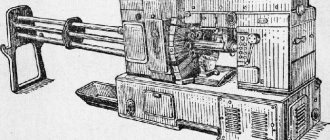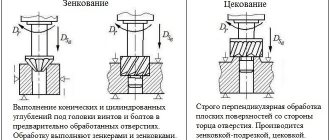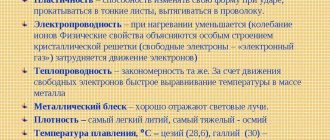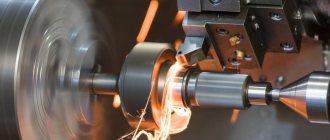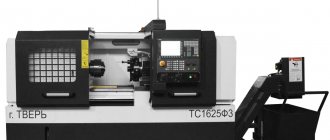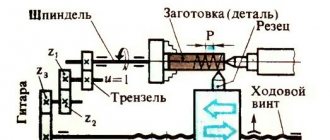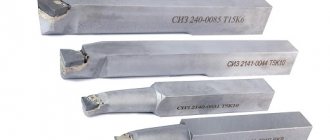Types and Types of Tools
A lathe is a universal tool for carrying out work using tools:
- cutter (cutters are the main type of tool in turning);
- drilling (drills, countersinks, countersinks, reamers);
- thread-cutting (taps for internal threads, dies for external threads).
Numerous capabilities of turning equipment make it possible to solve the problems of cleanliness and accuracy of processing, so, using sequential operations using various types and designs of tools, you can achieve high performance in all the necessary parameters of cleanliness and accuracy of machined surfaces.
Specifics of turning
All metal turning operations are performed using high-quality cutting equipment. They are made using shafts, rings, pins, flanges and cutters. By the way, the names of the latter almost always correspond to the type of operation for which the cutting tool is used.
Operations on a lathe have proven themselves in the manufacture of oval, conical, and end metal products. It is used for cutting internal and external threads on parts, turning grooves or eliminating them, etc.
Don’t forget about additional tools installed on lathes as needed. They are designed to determine the accuracy and productivity of performed operations. For example, on turret lathes, holders are mounted, which can be cylindrical, prismatic, or have a complex shape. Additional stops are often necessary to limit the feed of the workpiece or the rotation of the turret.
Metalworking
Classification of incisors
Taking into account various factors influencing the cutting process, cutters are classified:
- by design (solid, with soldered, welded or mechanically fastened plate);
- in the direction of movement of the machine support (with the main cutting edge located on the right or left);
- by surface cleanliness;
- according to the material from which the working part of the tool is made - from hard alloys, tool and high-speed steels, ceramics, artificial diamonds;
- by technological purpose:
- pass-through straight and bent, pass-through persistent;
- pruning;
- boring;
- for contour turning on CNC machines.
Among the types of through cutters, we can distinguish cutters with different head configurations - bent (Fig. 1, b), curved, drawn out, which, unlike straight cutters (Fig. 1, a), can be used if it is necessary to perform sequential actions:
- turning;
- trimming;
- processing of specially shaped parts.
Thrust cutters (Fig. 1, c) are characterized by a right angle φ (the angle between the direction of feed and the main cutting edge), which is convenient when processing protrusions and elongated parts with a small margin of rigidity. When trimming the ends, it is desirable to use scoring cutters (Fig. 1, d); if it is necessary to cut workpieces, cutting cutters are provided (Fig. 1, f).
Rice. 1. Types of incisors
a – straight; b – bent; c – persistent; d – scoring for processing end surfaces; d – boring; e – cutting; g – thread-cutting; h – for contour turning; and – shaped; L – cutter length; H – cutter height; B – cutter width; B1 – width of the cutter head; φ = lead angle; Dzag – workpiece diameter; с – width of the cutting part of the cutter; D – diameter of the cutter seating surface
To form complex profiles, shaped cutters are used (Fig. 1, i); when processing surfaces using a template or on machines with SPU, cutters for contour turning (Fig. 1, h) with an increased angle φ are used.
Often, in order to process complex part configurations, it is necessary to ensure a given direction of entry of the cutter into the workpiece - for this, the use of tangential and radial cutters is most appropriate.
The cross-section of the cutter body is important for its accurate installation, therefore, when developing cutting technology, this factor should also be taken into account.
There are cutters with a standardized square, rectangular, and round cross-section, in accordance with the dimensions of the tool holders.
Types of operations
Programmable and manual lathes allow the master (operator) to perform the following operations:
- Turning a cylindrical surface - used to give the desired shape to the outer part of the workpiece.
- Turning a conical surface - the cutter is placed at an angle to the product, therefore, when removing metal, a conical shape is formed.
- Creation of threads (for example, metric, inch, multi-start, etc.) is performed using a cutting tool. It moves in a circle, cutting successive grooves into the parts. The thread can also be internal, and it is made not only with the help of cutters, but also with taps.
- End trimming is a reduction in the end part of a part. When setting up, it is important to consider the orientation of the tool, which directly depends on the type of cutter used.
- Boring - performed using a boring type cutter. It is used when it is necessary to increase the internal diameter of the workpiece.
- Cutting and turning grooves - with a cutting tool, a master can cut into the body of a part and can either cut off the necessary part of it, or make a groove of a given depth.
- Spiral Grooving - This method is ideal for cutting spiral grooves on the end of a workpiece. The feed of the cutter during processing is carried out in the radial direction. The operation is used in the manufacture of stepped shafts.
- Processing of a shaped surface is carried out using translational movements of a cutting tool (shaped type) in the opposite direction to the moving part. Most often used to interact with complex surfaces: spherical, barrel-shaped, etc.
- Lathes can also be used for drilling, countersinking or reaming. In this case, the tool (drill, tap, countersink) is attached to the tailstock of the machine.
Turning equipment is also used for surface finishing. The rolling procedure, carried out using special rollers, is suitable for this.
Types of turning: what techniques are used?
Turning is a vast field of knowledge. The specialist must choose not only the appropriate equipment, but also know the specifics of performing all the techniques. There are about a dozen main types of turning work, but it should be understood that each type of processing can concern parts of different diameters, sizes, and textures. Consequently, it is not possible to count exactly what types of turning and techniques there are. Main types of turning:
- processing of external surfaces of cylindrical shape;
- turning the outer surfaces of a conical sample;
- processing of ledges and ends of parts;
- processing the surfaces of cylinders and cubes from the inside;
- piece of workpiece;
- turning grooves and holes;
- drilling holes;
- work associated with drilling - reaming and countersinking of sides;
- cutting internal and external threads;
- processing of shaped planes;
- rolling corrugation and more.
As you can see from the list, there are many turning techniques. The worker must not only know them all thoroughly, but also be aware of the safety rules when turning or cutting certain workpieces.
What operations can be performed on lathes?
Lathe equipment is used for:
- cutting various threads;
- drilling holes, boring them, reaming them, countersinking (the drill chuck performs a reciprocating movement);
- cutting off part of the product;
- turning various grooves on the surface of the product;
- processing of internal cylindrical, conical surfaces;
- surface chamfers;
- rolling of reflections.
The variety of types of work makes the machines indispensable in processing:
- nuts;
- shafts of various configurations;
- bushings;
- pulleys;
- rings;
- couplings;
- gear wheels.
What kind of cutters will be needed for the job?
There are about 15 types of cutters on a standard machine. Each of them is designed to perform a specific turning technique. You cannot use an unsuitable cutter that performs identical functions. This may give effective results, but will lead to equipment failure.
The cutters are the most important part of the mechanim. In manual and automated machines, they are replaced by a specialist with each stroke. The only exceptions are specialized options that can be configured so that the cutter is automatically changed to the required one a step or two ahead. This feature saves a lot of time. Automatic lathes change the cutter automatically, that is, without human intervention. This is very convenient, since there is no risk of injury, especially when testing functionality, and it also saves significant time and resources.
Specialized machines are equipped with several cutters, since they work with a specific shape and type of part. But universal ones are equipped with dozens of cutters with different sizes. In the largest versions there can be 15 varieties, all of different sizes. Kinds:
- straight cutter;
- thrust mechanism;
- bent through cutter;
- cut-off not passable;
- groove cutter;
- boring mechanism;
- countersink;
- drill;
- cutter for carving;
- scan;
- shaped option;
- tap;
- knurling.
Please note that the knurling cutters have a directional arrow indicating how the tooling moves when the workpiece rotates.
Cutting a product or workpiece
is performed by cutting cutters, with the tool moving transversely to the center of the part. Depending on the size of the part, various methods of fixing an almost cut or cut part are used. Tool breakage at the end of cutting is prevented by using supporting rests and reducing the cutter feed (by 45-55%) when approaching the center of the part by half the radius of the workpiece. Small parts fall into a tray, part catcher or are fixed in a turret fixture.
Features of the equipment and its operation
Lathes can be automated (CNC) or designed for manual operation. Modern CNCs are equipped with a numerical control panel for independent, automatic solution of the required task. The only exception is the blank installation function - this action must be performed by the operator. Devices of this type are characterized by high accuracy and ease of use.
The use of manual lathes involves the need to install the workpiece, cutter, carry out calculations, direct the support to the starting point, select the rotation speed and feed mode. In addition, during work the master must independently change all the specified parameters.
A separate category also includes machines:
- turning-screw-cutting - on them the products are given a taper, threads are cut, corrugations are rolled, grooves are turned, etc.;
- turning-turret - allow processing of parts with complex configurations, for example, rods, forgings, castings;
- rotary turning (one-, two-column) - turning of large-diameter products;
- multi-cutting semi-automatic;
- in the form of processing complexes (for turning and milling work).
What tools are used to process metal on a lathe?
The main turning tool is a cutter, which can be made from:
- carbon steel;
- alloy steel, with the addition of chromium, nickel, nitrogen, copper;
- high-speed alloys;
- mineral ceramics;
- artificial diamonds;
- composites, hexamites and other synthetic materials.
The most common is the turning cutter, which comes in:
- Straight through - suitable for turning the external surface of a part; most often they prefer to use the following holder sizes: 20*20 mm, 25*16 mm and 32*20 mm.
- Threaded - this type allows you to get external and internal threads. Operations of the first type are carried out using direct devices with spear-shaped heads. Internal threads are cut using curved threads.
- Cutting - with its help, grooves of various depths are formed. The tool heads are equipped with carbide tips.
- Boring - used if you need to machine a through or blind hole. Such turning tools differ among themselves in the angles of inclination of their heads. Thus, a blind hole is processed using a cutter with an angle of 95°, a through hole - 60°.
- Bent trimmer - it is used to process the end surface of the part.
- Thrust drive - used for turning shoulders at the ends of stepped shafts and other products.
- Bent through - turning of end surfaces is performed, as well as in the case of chamfering.
Types of turning auxiliary tools:
- centering drills - with their help, blind, through holes are obtained;
- boring attachment - allows you to conveniently bore cavities;
- pass-through - a tool used in roughing, semi-finishing and finishing turning of surfaces (external, internal), as well as for facing conical products;
- carbide inserts - used in the production of tool steel parts.
Types of equipment used
Metal turning is carried out on screw-cutting lathes, automatic machines or turning machining centers. Most lathes are horizontal equipment.
Main components of a manual lathe:
- The bed is the supporting part of the equipment on which all its other elements are located.
- The headstock, which houses the electric motor and drive system that drives the spindle.
- Spindle - supports and rotates the workpiece, which is secured in the collet chuck.
- A tailstock that secures the opposite end of the workpiece (sometimes this includes a rest - a device that supports long workpieces whose rigidity is reduced).
- A support is a reciprocating moving platform on which the working head with a tool is fixed.
Lathes can be controlled by a computer, in which case they are called computer numerical control lathes. All operations performed on such units are automated and controlled by a built-in computer.
Cutting tool
The tools required for turning are usually solid or compound cutters with a rectangular shape. Composite tool inserts can vary in size and shape, but are usually shaped like a square, triangle, or diamond. The tool is inserted into the machine support seat and fed to the rotating workpiece for cutting. Cutting tools are classified according to:
- Cutter extension angle – from 0 to 800;
- The shape of the working end is square or pointed;
- Direction of movement with a support – right- or left-handed;
- Cutting edge material – steel or carbide.
In addition to cutters, drills, cutters, taps, reamers, etc. are used as working tools on lathes.
Milling cutters, in particular, are cylindrical multi-point cutting tools with sharp teeth located on the outside. The spaces between the teeth are called grooves and allow chips to flow away from the workpiece. The teeth can be straight or helical; the presence of a helix angle along the side of the cutter, but more often they are located in a spiral. The spiral angle reduces the load on the teeth due to the redistribution of forces. The more teeth, the better the quality of the resulting surface.
All cutting tools used in turning can be made of tool steels or carbide alloys. The selection criteria are hardness, impact strength and wear resistance of the tool.
